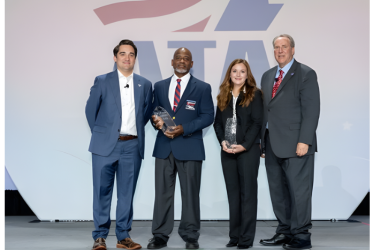By the end of 2023, a total of 267 representatives from the trucking industry, across 30 states, will have had 294 meetings with members of Congress or their staff, according to an expert panel during a session at ATA’s 2023 Management Conference & Exhibition on Oct. 15.
“We are a consistent voice. It’s vital that we effectively convey why our issues hold such significance,” said Emily Williams, panelist and manager of business development for Geotab.
The meetings with Congress members are usually short in duration, making it essential that representatives are well-prepared in what they should articulate and how they should convey their message/goals, said Alexandra Rosen, director of legislative affairs for ATA. Currently, ATA is actively addressing critical issues such as the truck driver shortage, litigation abuses, insufficient truck parking availability, and solutions for supply chain challenges.
Rosen explained that trucking industry representatives can engage with Congress in two critical ways: meeting directly with their congressional representatives or inviting Congress members to their businesses to observe their operations, including the trucks involved in transporting goods.
The panelists outlined four essential pillars to have an effective visit to Capitol Hill: clarity and conciseness, a thorough understanding of their audience, respect, and, maybe most importantly, a clear and specific request. Know your audience, establish common ground, and articulate your connection,” said Abbey Schroeder, grassroots program manager for ATA.
The panelists also identified common pitfalls that can be encountered when meeting with Congress members. To avoid these, the panelists recommend understanding and respecting the preciousness of time, avoiding inflammatory language, recognizing the limitations of a policymaker’s authority, not shying away from challenging conversations, and ensuring that the ‘ask’ is not overlooked.
ATA recommends that truck driving representatives provide a historical overview of issues, share the size of their workforce, highlight their community impact, provide relevant facts, and specify how lawmakers can be of assistance.
Source: Transport Topics











